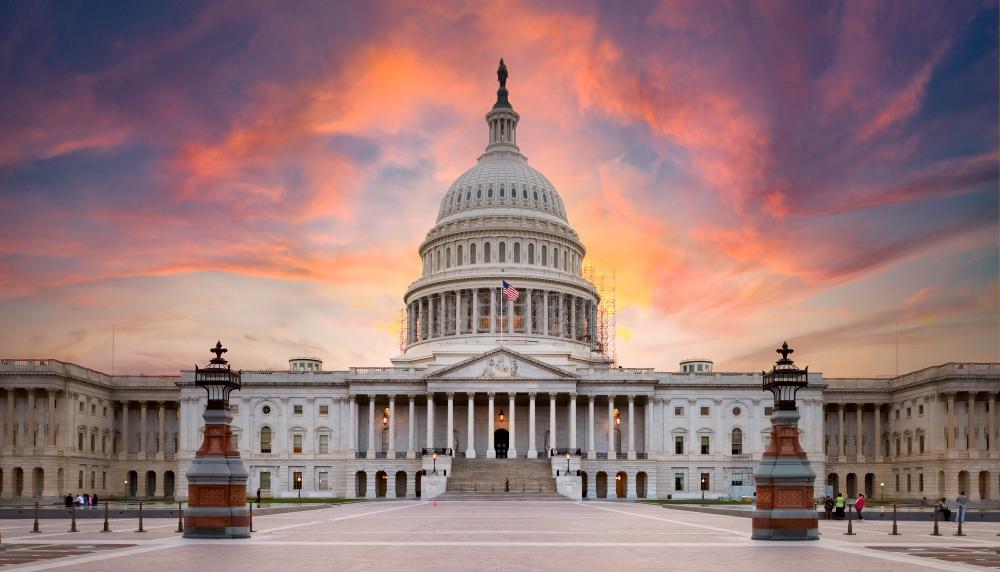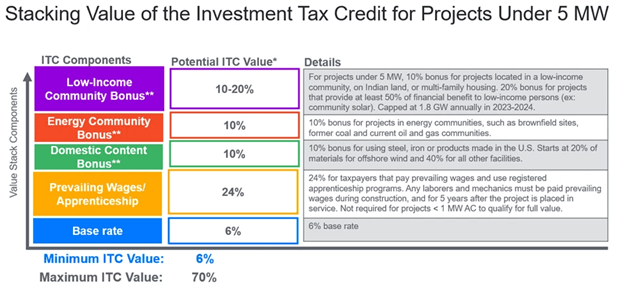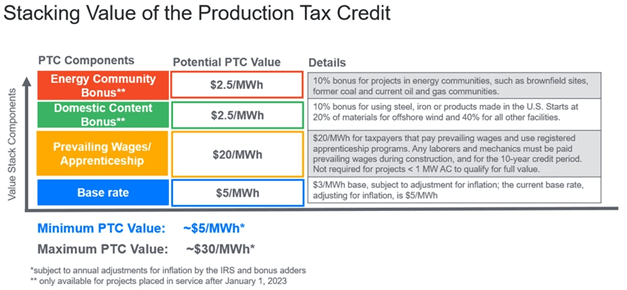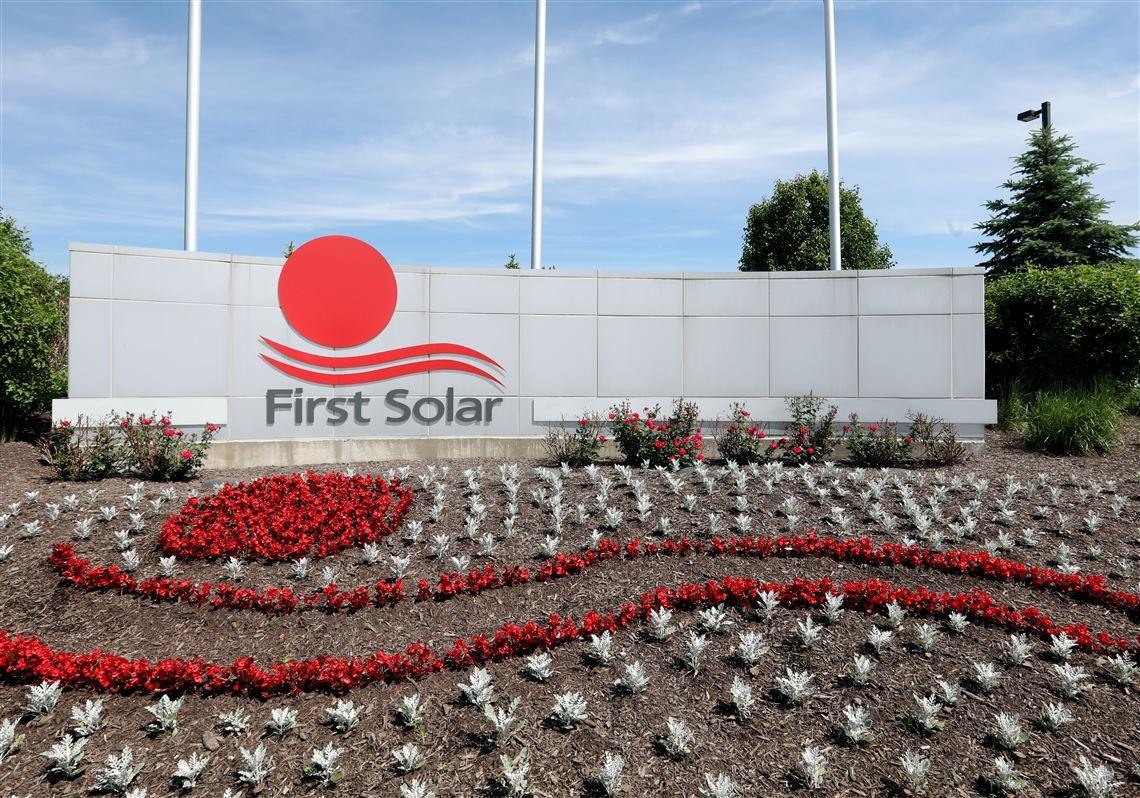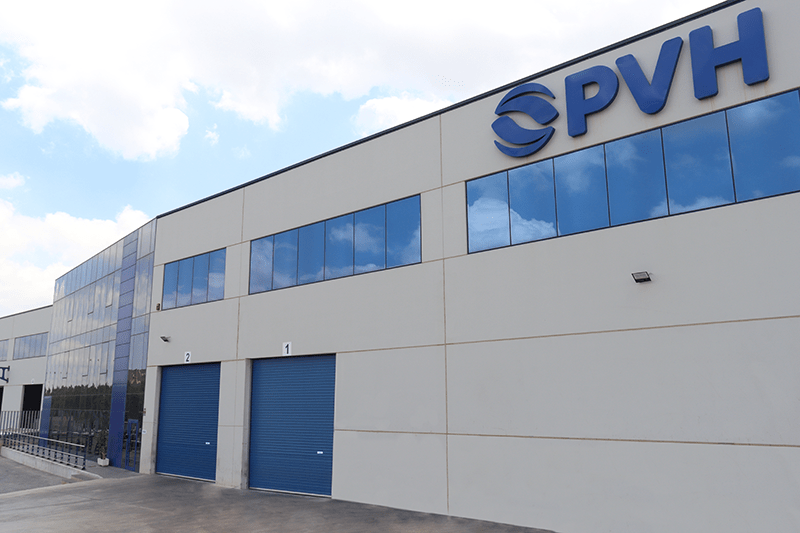It only took Congress 34 years, but a federal law to meaningfully address the harmful effects of climate change – the Inflation Reduction Act (IRA) – finally passed the body and was signed into law by the President just weeks ago. The first congressional hearings on climate change were held way back in 1988, and the problem has only gotten drastically worse since then. The IRA, however, brings about renewed optimism. Its passage is a signature accomplishment for climate activists who have long pined for more federal action to combat climate change.
How Will the Solar Industry be Impacted?
The IRA is chock full of measures to advance the country’s decarbonization goals, including incentives to spur innovation and further growth in the clean energy sector. The solar industry stands to potentially be one of the biggest beneficiaries of the bill’s passage. Here’s a high-level overview of the primary solar incentives in the bill that will give the industry a major jolt in the arm:
- The bill restores the 30% federal Investment Tax Credit (ITC), extending it for another 10 years. This policy certainty has long evaded the solar industry as Congress has made a habit of fiddling with the ITC and driving boom-bust cycles with their last-minute decision making. Energy storage technologies are now also eligible for the ITC.
- For the first time, solar projects will now also be eligible for the Production Tax Credit (PTC). Unlike the ITC which offers a one-time tax credit for project investors, the PTC is tied to the power that a renewable project generates over 10 years.
- Additional add-on tax credits can be applied to the ITC and PTC. There are an array of additional “bonus” add-ons that can be stacked together to create an especially lucrative financial incentive. These add-ons seek to encourage more solar projects to locate in low-income communities and in formerly coal-dependent communities, in addition to encouraging sourcing materials from domestic suppliers and paying prevailing wages for project workers. The graphics below show the myriad of add-on components of the ITC and PTC and their significant cumulative value.
The various pro-solar initiatives baked into the IRA have already led to a boon in domestic manufacturing, as leading solar companies make renewed commitments to bring solar manufacturing jobs to the United States.
First Solar, the largest solar panel manufacturer in the U.S., announced in late August that they will invest up to $1.2B to expand solar panel manufacturing capacity in the country. About $1B will go towards a new facility to be located in the Southeast, which will employ hundreds and begin operations by 2025. An additional $185M will go towards expanding production capacity at the company’s existing factory in Ohio.
SPI Energy, a PV project developer and EPC firm, announced just days after the passage of the IRA that they intend to secure 1.5GW of solar wafer manufacturing equipment for a new U.S. production facility. The company is targeting delivery and production of 1.5GW of solar wafers production capacity by 2023, with plans to double that capacity by 2024. This will be the first silicon wafer facility based in the U.S. in nearly a decade’s time.
European PV Hardware, one of the largest solar tracker providers in the world, also announced recently plans to bring a 6 GW factory to Texas that will be operational by next year. Q Cells is also poking around states as it scouts a location for a nearly $2B 9 MW module manufacturing facility.
These recent investments are just the tip of the iceberg, according to the Solar Industry Energy Association (SEIA). SEIA foresees an avalanche of additional solar manufacturing investments coming to the U.S. in coming years:
“As a direct result of the IRA, we expect to see significant new investments in domestic solar module, tracker, inverter and racking capacity within the next 2-3 years, followed by new investments in solar ingot, wafer and cell capacity within 3-5 years. By the end of the decade, the IRA will be instrumental in ensuring the U.S. solar industry meets its goal of 50 gigawatts (GW) of domestic solar manufacturing capacity across all key industry segments by 2030.”
Burden for Success Shifts to States
The passage of the IRA has brought renewed enthusiasm to climate activists and renewable energy enthusiasts who now see a much more feasible path forward to meeting climate goals. Lost in the euphoria, however, is the fact that while the federal action is indeed historic and desperately needed, it is not an instantaneous cure-all. States, municipalities, and utilities will play an outsized role in maximizing the true potential of the IRA.
The shear scale of new renewables capacity required to be developed in the U.S. in order to meet climate targets is significant. This presents an opportunity that is both exciting and daunting. In a recent guest article for Forbes, Senior Policy Expert for Energy Innovation’s Power Sector Transformation team, Daniel Esposito, points out in stark terms just how much the status quo will need to be upended in order to maximize the full potential of the IRA:
“The U.S. must build roughly 100 gigawatts (GW) of wind and solar capacity annually through 2030 to hit its climate targets, but it developed just 28 GW in 2021. More than 920 GW have applied for grid interconnection, but most projects drop out when faced with insurmountable transmission upgrade costs that have many “free-rider” beneficiaries. Successful ones languish for years waiting for approval.”
The traditional process of getting solar projects approved is overly bureaucratic, time-consuming, and far from streamlined. As noted by Esposito, there are a number of prominent challenges that the industry has historically faced that will need to be addressed so as to not impede the IRA’s plans to drastically increase renewables capacity.
- Patchwork permitting process: solar projects have long been plagued by a disjointed permitting process that differs – often significantly – from county to county. The lack of uniformity adds time and uncertainty to projects, both of which can be debilitating. The worrisome trend of solar farm moratoriums that are sprouting up across the country is not helping matters either.
- Interconnection issues: The time that solar projects spend in interconnection queues is increasing. These queues are a byproduct of the various impact studies that utilities and transmission system operators require before a project can be greenlighted. According to a report from the Lawrence Berkely National Laboratory of all energy projects, “the typical duration from connection request to commercial operation increased from ~2.1 years for projects built in 2000-2010 to ~3.7 years for those built in 2011-2021.”
- Transmission access: Solar companies can build out as much solar capacity as they want, but all will be for naught without improvements and extension of the electric grid, all of which has a long-time horizon.
The common denominator to all of the above is time. These time-consuming hurdles to solar project development and grid connection threaten so much of the ambitious plans set forth in the IRA.
There is another omnipresent threat to the success of the IRA in ramping up renewables deployment – politics. A lot of the models predicting that the IRA will help to rapidly expand renewable capacity in the country are based on economic models that fail to account for political differences among the states. In many states, state utility commissions play an outsized role in determining how much renewable energy capacity to incorporate into the grid. While solar capacity is growing off the charts in this country, there are still many states where the fossil fuels industry has commanding influence over the state legislators and utility commissions that will dictate how much of the pro-renewable initiatives in the IRA will actually happen in their respective states.
Lest we forgot the recently decided Supreme Court case West Virginia vs. EPA where a bevy of Republican-led states and fossil fuel companies successfully sued to block the EPA’s ability to regulate carbon dioxide emissions related to climate change.
It is worth pointing out that the IRA was signed into law strictly along party lines with no Republican support for the bill. As such, ambitious Republican state elected officials will see little political incentive to go to the mat to take advantage of the pro-renewables initiatives in the IRA given the political exposure they would open themselves up to during a primary campaign.
Even so, there is reason for optimism. The economics of solar and wind energy continue to improve by leaps and bounds with each passing decade. The IRA is loaded with incentives that will continue to bend the cost curve down, and most importantly, that establish a degree of certainty that has long eluded the renewable energy industry. Bi-partisan advocacy organizations like the U.S. Climate Alliance, led by Red-state and Blue-state governors alike, have only hardened their resolve to make sure that the benefits of renewable energy flow to every corner of this country in the wake of the IRA’s passage. There are clear challenges to implementation for sure, but the solar industry has proven itself to be resilient time and time again, and we are confident that key industry players will rise to meet the moment.
Cover Photo Source: ADT Solar
